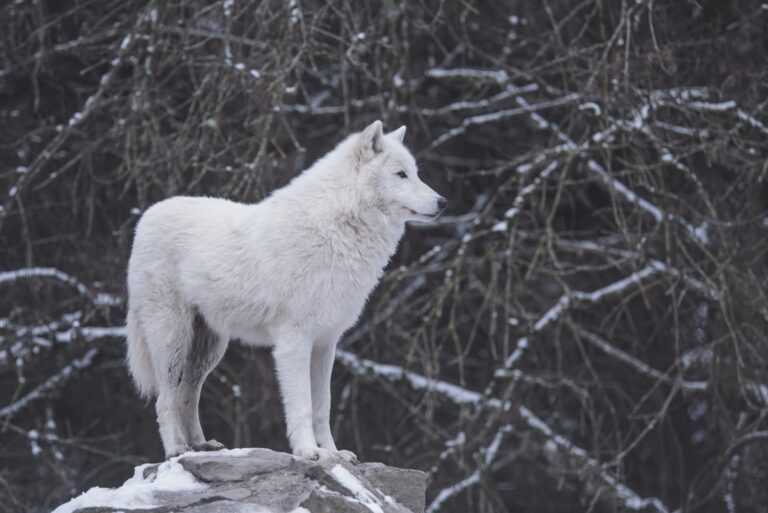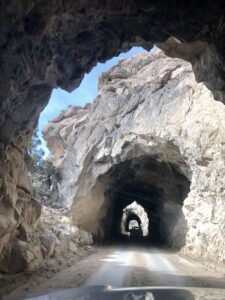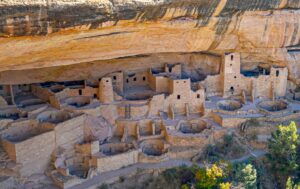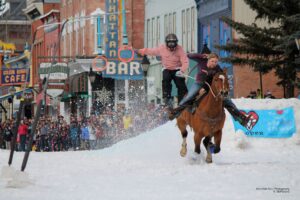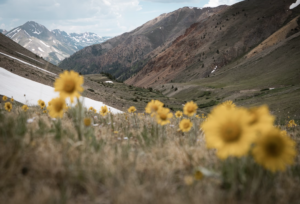Wolves can run 35mph and bare 42 teeth! Their bite force is around 400psi, the same force as a fire truck hose. This is also enough force to gnaw through bone. These predators can take down some of the biggest prey such as caribou, moose, elk and even bison.
Wolves are typically not aggressive towards humans and will often flee if they encounter people. To avoid contact with wolves, keep your campsite clean and free of food or garbage, and don’t let pets roam freely.
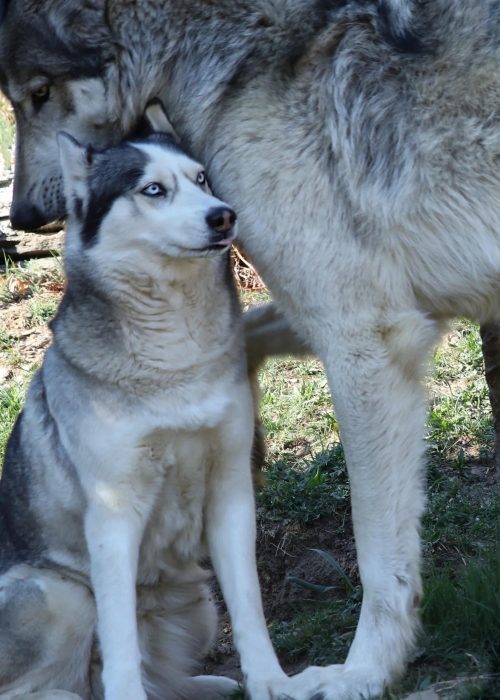
Wolves reintroduced into Colorado
With the recent reintroduction of wolves in Colorado, we wanted to briefly educate you (and ourselves) on what to do if we are to encounter a wolf in the wild. While wolves tend to avoid humans, they are not shy about defending their food.
So far, 5 wolves were introduced into Grand County, and 5 additional wolves were introduced in Summit County near Heeney at the end of 2023. Let’s explore possible scenarios and how to survive an encounter.
Identifying a wolf
Wolves look awfully similar to coyotes and even some domestic dogs. The difference is their massive size. They can grow up to six feet tall and weigh 80-100lbs depending on gender. Their fur color can vary from black to brown to gray to white. Their tracks are about 4-5 inches wide, while a Rottweiler’s paw prints are around 1.5 – 2 inches wide.
Are wolves dangerous?
Wolves aren’t particularly interested in humans, and they tend to avoid us at all costs. However, if they feel their food is in danger they are fast and relentless and escaping would be nearly impossible. Wolves travel in packs, so where there is one, there is many more nearby. Wolves do pose a big threat to livestock and our dogs!
Wolves vs. your dogs
Wolves are carnivores and extremely dangerous to our dogs. If you are in wolf territory, please don’t let your dog roam off leash or approach an animal carcass, as the wolf will feel it’s food is being threatened and will not hesitate to eliminate the threat. Since wolves avoid urban areas, domestic dogs are generally safe. If you are out in the woods with your dog and hear a wolf or wolves howl, it’s time to get to safety.
Preventing a wolf attack
Good news – wolves don’t want to attack you! If you are camping, be sure to keep your campsite clean and clear of food and garbage. Don’t let your pets roam outside the campsite. Use bear safe containers for smelly toiletries and foods.
Keep a noise maker on hand just in case. Don’t approach dead carcasses you may see lying around.
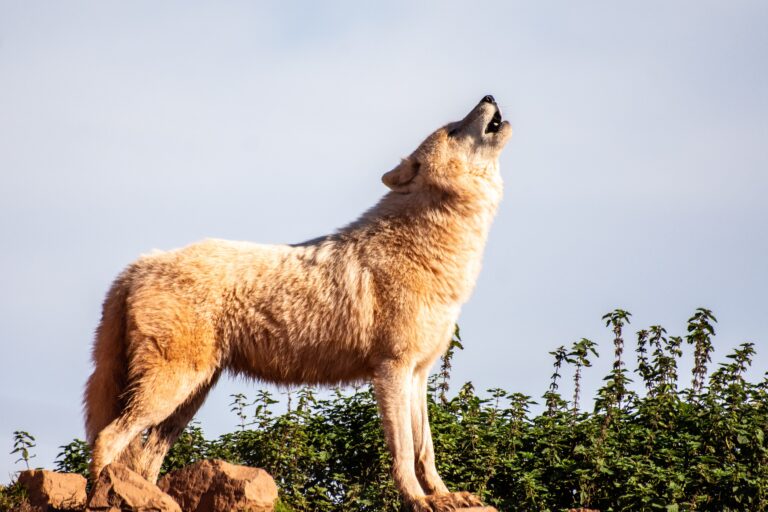
Encountering a wolf
Remain calm. The wolf will more than likely flee the scene as soon as it sees you. Wolves are unlikely to attack humans. Keep your distance and let the wolf leave.
If you happen to find one that isn’t afraid of humans, stand tall, be loud, and throw things at it. If it’s approaching it doesn’t necessarily mean it’s aggressive. Some people who visit from out of state may not understand how wild these wild animals are and try to feed them. If this is the case, they may become comfortable around humans and be looking for food from you. However, wolves that are less afraid of humans are more likely to have rabies.
When the wolf isn't afraid
If the wolf won’t stop approaching after being loud and throwing things, clap your hands and backup slowly. Act like a crazy person, no one is judging you. The louder and more intimidating, the better chances you have. Never turn your back on this predator. Use any thing you have access to as a weapon – ski pole, walking stick, bear spray, stun gun, keychain pepper spray, even your hat or sunglasses. If the wolf retreats, continue moving slowly and get to safety.
Climb a tree if you are out of other options. Wolves can’t climb trees and this tactic will at least buy you some time. Pick your kids up, and keep your pets close. Stay loud, stand your ground, maintain eye contact, use bear spray – you’ll more than likely be fine.
More about wolves
Wolves are carnivore predators and travel in packs to take down larger prey such as bison, elk, caribou, moose, etc.
This isn’t meant to scare you, but instead educate you on how to stay safe if you happen to be one of the few humans to encounter a wolf in the wild. Don’t try to pet or feed the wolves. Have fun out there!
